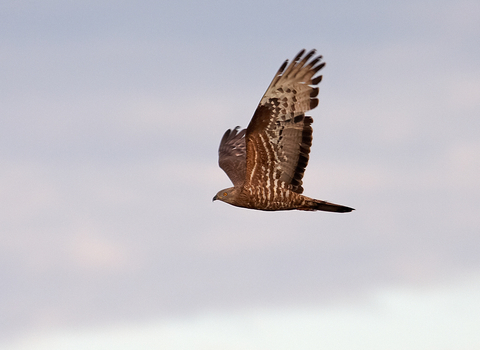
Honey buzzard ©Stefan Johansson
Honey buzzard
Rare summer visitors, honey buzzards breed in open woodland where they feed on the nests and larvae of bees and wasps.
Scientific name
Pernis apivorusWhen to see
May to SeptemberSpecies information
Category
Statistics
Length: 56cmWingspan: 142cm
Weight: 730g
Classified in the UK as Amber under the Birds of Conservation Concern 5: the Red List for Birds (2021). Protected in the UK under the Wildlife and Countryside Act, 1981.
